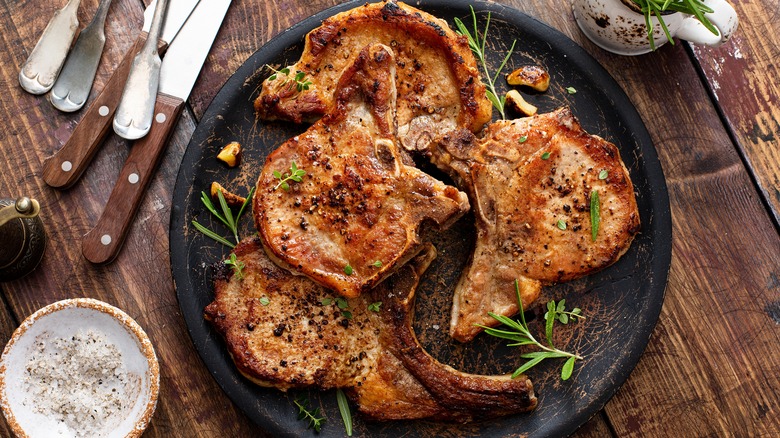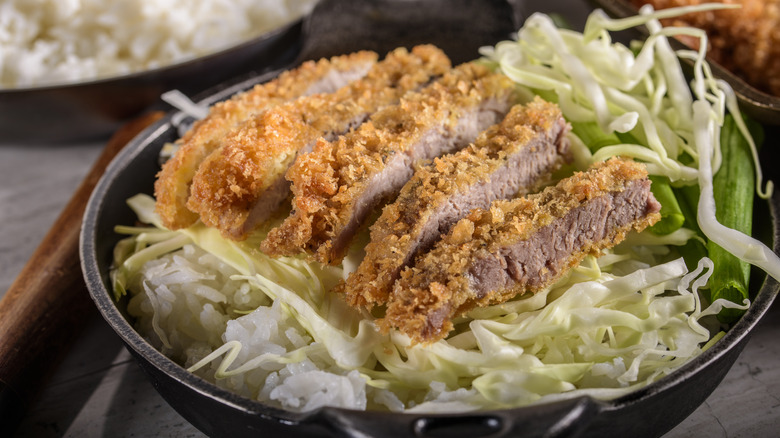When To Use Thin Vs. Thick Cut Pork Chops Based On Your Dinner Goals
Pork can be a difficult protein to cook on any day, and choosing the proper cut is half the battle. Even with the pork chop, a classic cut if there ever was one, selection can be dicey. The main dilemma? It's whether to go thick or thin.
First things first, let's establish what qualifies as a thin or a thick pork chop. A thin pork chop should be in the range of 1/8 to 1/4-inch thick, and a thick pork chop is usually more than 1 inch. Whether it's bone-in or out doesn't necessarily matter (though the bone usually contributes a good amount of flavor); just consider the thickness of the actual chop. Obviously, the thinner pork chops will cook faster than the thicker ones — but what does that mean for your dinner?
It all comes down to texture versus taste. Thin pork chops that cook in a flash work best for fast-cooking methods, like pan- or deep-frying. They gain superiorly crispy exteriors while cooking through nicely. But for depth of flavor, thick-cut pork chops are the way to go. Think of a beautifully caramelized sear or a patchwork of smoky grill marks on the exterior of a pork chop. You can only get that intensely flavored exterior during long cook times over high heat. With that in mind, you need a generously thick interior — one that will stay juicy and not overcook on the high heat.
Decide your cut based on flavor or texture
Let's break this rule down a bit. The name of the game with thin-cut pork chops is texture. Since fried pork chops are best made with thin-cut pork chops, this means that Japanese-style katsu pork, German schnitzel, and Kentucky-fried pork chops are all great places to start. But this can also apply to Southern classic smothered pork chops, where thin pork chops are dredged in flour and quickly seared before being stewed in an epic gravy. Thick pork chops just won't have that same melt-in-your-mouth texture that thin ones get during a long simmer.
Speaking of thick pork chops, pull these out when recipes are all about the flavor. Whether it's a recipe for a marinated chop grilled over charcoal or a simple pan-seared pork chop basted in butter, you'll want your pork to be thick-cut. You should still keep a meat thermometer on hand when cooking your pork chops, as you want the meat cooked safely but not to the point of dryness.
So the next time you're selecting your pork chops, consider what your dinner goals are: taste or texture. Your answer will decide whether you go thick or thin.

